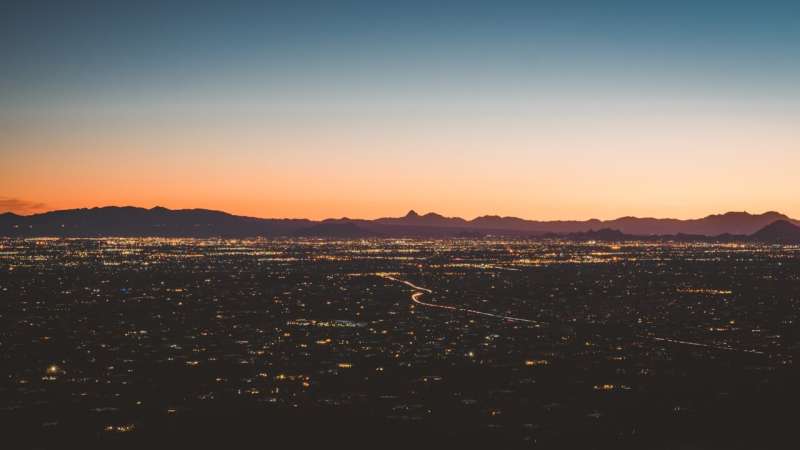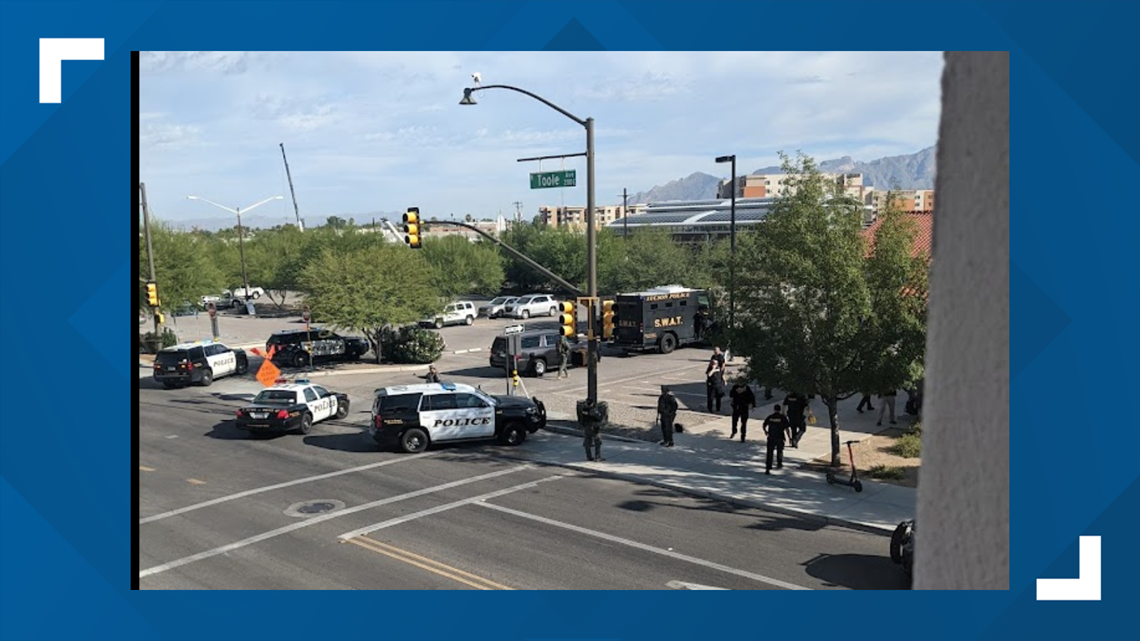[ad_1]
Credit: Unsplash / CC0 Public Domain
It’s not just you – Tucson has been absurdly hot lately.
The 115-degree high on June 15 was the fourth warmest in the city’s recorded history, according to the National Weather Service. The days before and immediately after had similar highs, with eight consecutive days hitting at or above 110 degrees.
This year isn’t as unusual as it might seem, says Ladd Keith, assistant professor at UArizona College of Architecture, Planning and Landscape Architecture. Five of the hottest years in the world occurred after 2015, he said, nine of the ten hottest years after 2005. Last year was the hottest year ever recorded for the northern hemisphere.
Keith, who is also the chair of the college’s Sustainable Built Environments program, researches urban planning and climate change with an emphasis on extreme heat.
He spoke to UArizona News about how people can keep their homes cool in extreme heat and why rising temperatures aren’t a single problem in the southwest.
Q: What is there for people who want to cool their home as efficiently as possible, what can they just do besides air conditioning?
A: For those who can afford to remodel their home, it is really important to make sure their air conditioning is up to date before the hot season. There are always opportunities to weather homes, and Tucson Electric Power has several energy efficiency rebate programs. Weathering a home usually involves an inspection to see where air is leaking from the home and a check on these types of things. If the house is older, the windows may need to be replaced as older style windows lose a lot of energy. Some of the newer stucco-style houses allow you to add insulation in places where the insulation is insufficient. Making sure your home is weatherproof is good for extreme heat events and also for our colder periods.
Another idea that you hear about a lot is to try to keep homes no cooler than 78 degrees when you can. Extreme heat events can put strain on the power grid, so anyone who does their part would help keep their home cool to just 78 degrees. I’ve seen recommendations on how to easily increase the temperature by 10 degrees when you are not at home to save energy. However, if you have pets in your home, you want it to be safe for them.
Q: Your research involves examining how cities can respond to increasing heat. Who is usually most affected by extreme heat waves?
A: Much of the concern about extreme heat is targeting lower-income people, marginalized populations, and people affected by homelessness. There are still many homes in Tucson that don’t have air conditioning or they have air conditioning, but residents of the house need to cut back on their usage because they cannot afford the utility bills, or the air conditioning system may be old or they have one Swamp cooler that only cools a specific part of the house. So it’s not a binary file where you either have air conditioning or you don’t; There are many variations in between.
Homeless people are among the most vulnerable populations as they are often outside day and night and more difficult to reach with heat warnings from the National Weather Service of extreme heat events.
Q: People may think that extreme heat is only a problem for the Southwest, but you said it was a national problem. Why this?
A: Temperatures are rising and cities in the southwest are realizing that there is a growing risk here. But heat is experienced differently in different places across the country. On the east coast and along the Gulf Coast, heat is paired with high humidity, which makes it much more dangerous to human health. It has to get really hot in the Southwest for it to have the same human health impact as it does in places with moisture. So there is a joke that there is more “dry heat” than “damp heat”. That’s correct; High humidity and lower heat can damage your health.
The other tricky thing is that temperate cities – cities in the north of the country – usually didn’t have to have air conditioning in the past. But we see air conditioning usage rates in these cities increasing when it gets hotter. Maybe they used to only have three days or a week when it was uncomfortable without air conditioning. But as the whole month becomes uncomfortable without air conditioning, people will have to start switching to air conditioning. Then you run into the same problem where those who can afford air conditioning will do so and will adapt, and those who live in substandard housing or cannot afford air conditioning will be left behind.
Q: What productive measures are cities taking to make them more resistant to extreme heat?
A: The big picture is that we don’t regulate heat as well as other climate risks. When I say “govern,” it’s not just governments, but private companies, nonprofits, and the public as well. If there is a risk of flooding, we have local flood departments and flood specialists and flood maps supported by the federal government. When there is wildfire, we have forest fire fighting departments. The heat response is currently much less developed.
Cities are trying to increase their heat resistance, just as cities have worked to become more resilient to other climate risks such as sea level rise, floods and forest fires. These efforts fall into two main buckets. The first is heat mitigation, where heat is reduced through activities such as urban greening – increasing urban forestry and vegetation. We can also reduce the number of impervious surfaces we have, such as large parking lots and oversized streets that absorb a lot of heat, lock in and give it off at night. The city of Tucson is actually part of a pilot program to study cool pavement coatings that would lighten the color of some streets to mitigate the urban heat island effect.
Then we have thermal management, which is more about preparing for and responding to emergencies. This also includes setting up early warning systems so that we can make the public aware of an impending heatwave. This includes setting up and sending messages about cooling centers, which are safe places for people who do not have adequate cooling at home and for people who are homeless.
Heat is a very complex issue as it involves the design of the entire city, the quality of living, the energy system, public health, emergency management, and weather and climate services. It has many interconnected parts.
Western heatwave threatens health in vulnerable communities Courtesy of the University of Arizona
citation: Keeping Homes and Cities Cool in Extreme Heat: Tips from Tucson (2021, June 24), accessed July 31, 2021 from https://phys.org/news/2021-06-homes-cities-cool-extreme- tucson.html
This document is subject to copyright. Except for fair trade for private study or research purposes, no part may be reproduced without written permission. The content is provided for informational purposes only.
[ad_2]







/cloudfront-us-east-1.images.arcpublishing.com/gray/GDDMT4MQXNAFJDM4L7QAD64T7A.jpg)




/cloudfront-us-east-1.images.arcpublishing.com/gray/XGU6SM7T4ND6XMX5IQROUZBVFY.jpg)

